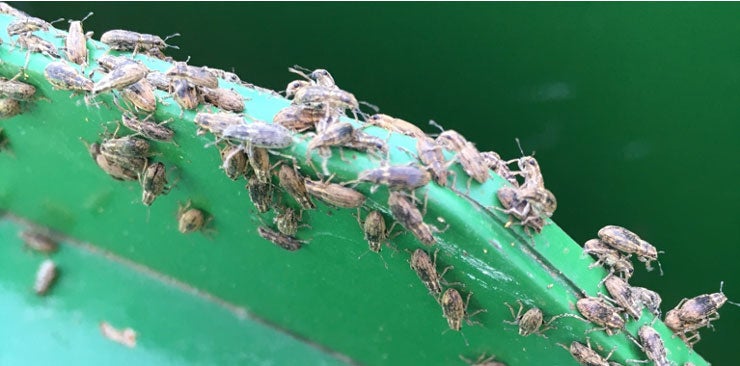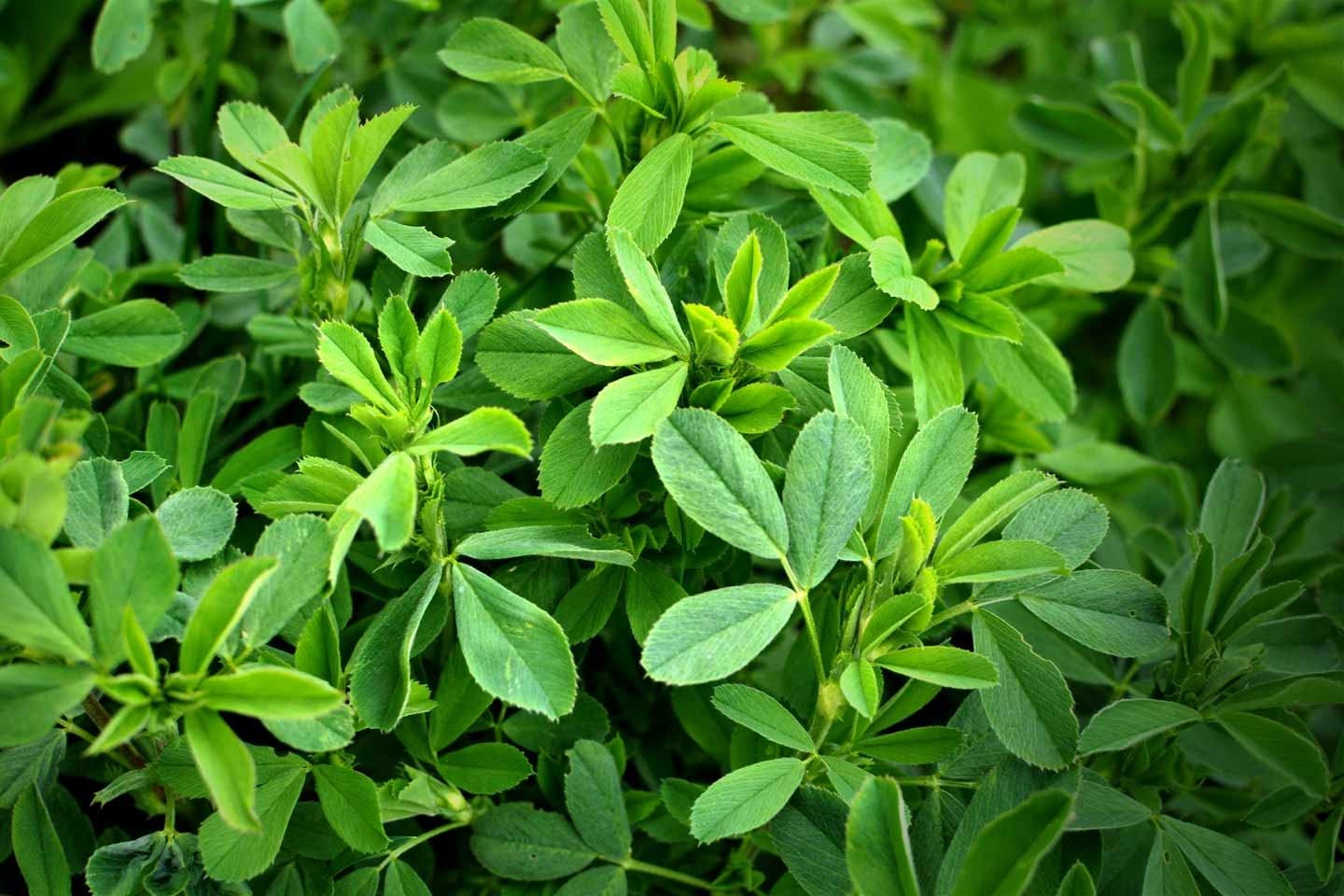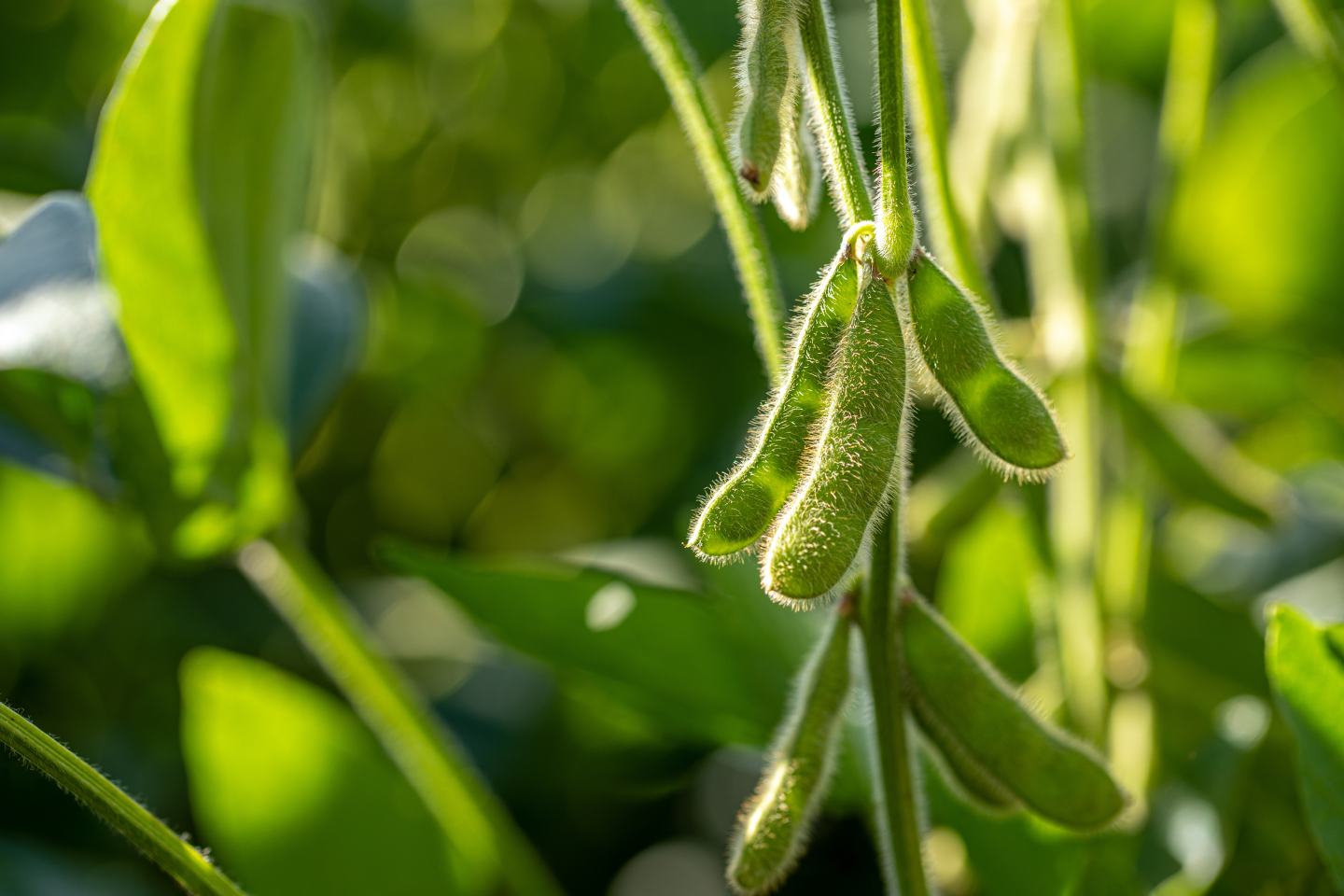Read the entire report from
our technical services team
Pea Leaf Weevil
Life cycle on field peas: Adults overwinter under vegetation in old alfalfa and clover fields or in waste areas. Adult activity and egg laying begin in mid-March through mid-April to early May. Eggs are scattered on the soil surface near plants and hatch in 16-18 days. Larvae move into the soil to feed on root nodules and feed for 20-40 days, then pupate in the soil. Adults emerge in July and August, disperse to other legumes and either feed or summer hibernate (aestivate) before overwintering. There may be activity during mild weather in the fall and winter. There is one generation each year.
Adults chew half-circle notches out of leaf margins, and larvae feed on rhizobial root nodules. Seedlings are very susceptible to injury and may be killed if the growing tip is damaged. Damage also may occur later in the year by larvae feeding on the roots of plants, particularly on root nodules
Economic threshold is reached when 30% of the plants have half-moon-shaped feeding notches on the clam leaves i.e., most recently emerging leaves that are folded together.

Pea Weevil
Life cycle on field peas: The pea weevil has one generation each year. Adults become active in early spring when temperatures reach around 68 F and move into pea crops from their hibernation sites such as under tree bark, posts, along fence lines, around sheds, bins, etc. Females must feed on pea pollen to mature their eggs, which usually takes several weeks. When mature, females lay eggs on the outside of green pea pods. Females will lay eggs one at a time in batches of up to 12 eggs and glue each egg to the green pod.
The orange eggs are easily seen by the naked eye. When hatched about two weeks after laying, the larvae then tunnel through the tissue directly below the egg but do not contact the exposed surface of the pod. The tiny larvae enter a seed and feed for five to seven weeks, in which time they grow to occupy much of the seed. The larvae pupate in the seed. Pupation usually occurs after harvest. The pupa develops into the adult, usually during the time when the grain is put into storage. Adults emerge over several months starting in mid-December.
Adult beetles fly to hibernation sites, which may include sheds, silos and grain bins, under the bark of trees, particularly pines and in cracks and crevices in posts. They remain in hibernation during summer, autumn and winter. The average life cycle of the pea weevil takes 60 days to complete the generation.

Mustang® Maxx and Hero® Insecticides
| Pea Leaf Weevil | Pea Pod Weevil |
|---|---|
| Adults only feed on leaf margins. | Adults feed on leaves, lay eggs on pods. |
| Larvae feed on roots. | Treat prior to infestation approximately 10% bloom. |
| Treat when present. | Treat at first bloom to control adults. |
| Treat when applying grass herbicide. | No control of larvae. |
| Product of choice: Mustang® Maxx insecticide | Product of choice: Hero® insecticide |
|
Capture® LFR® insecticide and Ethos® XB insecticide/fungicide will help control larvae. |
| Mustang Maxx Insecticide Requirements | Hero Insecticide Requirements |
|---|---|
| Use rate: 4.0 fl. oz. | Use 10.3 fl. oz. |
| Apply in a minimum of 2 gallons of finished spray per acre by air or in a minimum of 10 gallons per acre with ground equipment. | Apply in a minimum of 2 gallons of finished spray per acre by air or in a minimum of 10 gallons per acre with ground equipment. |
| REI: 12 hrs. | REI: 12 hrs. |
| PHI: 21 days | PHI: 21 days |
| Do not make applications less than five days apart. | Do not make applications less than seven days apart. |

Ethos XB insecticide/fungicide and Capture LFR, Hero and Mustang Maxx insecticides are Restricted Use Pesticides. Always read and follow all label directions, precautions and restrictions for use. Some products may not be registered for sale or use in all states. FMC, the FMC logo, Capture, Ethos, Hero, LFR and Mustang are trademarks of FMC Corporation or an affiliate. ©2020 FMC Corporation. All rights reserved. 20-FMC-2843 05/20



